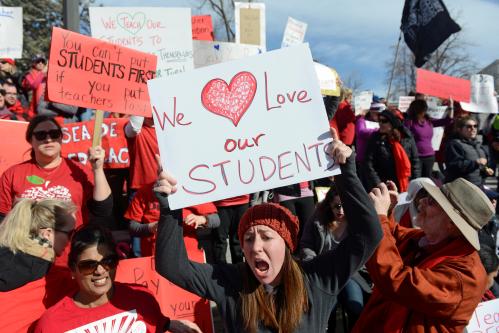Public money is tight. Policymakers at federal and state levels are looking for savings. Some, at least, are anxious not to hurt poor and middle-income families. How do they balance the budget without worsening inequality?
One obvious answer is to curb spending on affluent families. Americans in the top fifth of the distribution are on the winning side of the economic divide (and are the subject of my new book, Dream Hoarders).
Tax expenditures on the rich are high, with half the benefits of the ten biggest tax breaks going to families in the top quintile. The biggest ticket items are the Mortgage Interest Deduction and breaks on employer-sponsored health insurance. But there are also tax breaks available on 529 college savings plans, a result of legislation signed by George W. Bush in 2001. As we show in our new paper, “A tax break for ‘Dream Hoarders’: What to do about 529 college savings plans,” almost all of the benefits of the deductions go to families at the top of the income distribution.
Congress set to waste $30 billion
The tax deductions on savings in 529 plans, primarily exemptions from capital gains tax, cost the U.S. Treasury about $2 billion a year. This is set to rise to almost $4 billion. Over the next decade, the cumulative cost will be around $30 billion, according to the Office of Tax Analysis:
There is no evidence that the 529 incentives boost savings (though they certainly encourage switching savings vehicle).
Adding insult to injury: Most states spend on 529 plans, too
Most states offer additional incentives to save into 529 plans in the form of deductions against state income tax. Again, these are highly regressive in their distributional impact, since it is affluent families who save into 529 plans and have higher marginal rates.
In the 24 states who report their spending on these tax breaks, the combined cost is around $265 million each year; the total for all states with tax benefits will of course be much higher:
For cash-strapped state treasuries, these costs are hard to justify.
Policy, meet politics
In January 2015, President Obama attempted to redirect the tax expenditures flowing to upper middle class families through 529 plans into tax credits to help a broader range of American families. He was forced to retreat under pressure not only from Republicans, but from liberal members of his own party. But the President was right about the policy position. As we conclude in the paper:
529 plans are of course just one example of the “upside down” tax expenditures in both federal and state tax codes. There are other, bigger fish to fry, notably the mortgage interest deduction. But the Bush-era handout to 529 holders is a strong contender for the prize of most absurd tax break of all: a boondoggle for the rich that does nothing to increase savings, wastes precious federal tax dollars, and may even fuel inflation in tuition fees.






Commentary
A better way to cut government spending: End tax breaks on 529 college savings plans
June 29, 2017